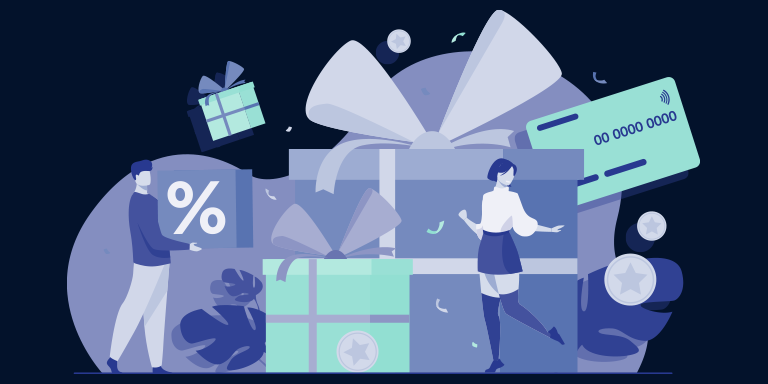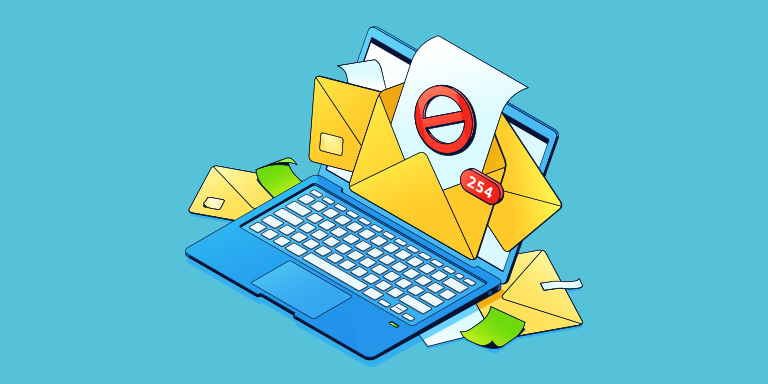In 2025, loyalty programs are less about freebies and more about personalized engagement, data-driven decisions, and emotional connections with customers.
Loyalty programs are everywhere today, and for good reason: they work. When done right, loyalty programs can increase customer retention, drive more sales, and boost brand reputation without a huge marketing budget.
However, not all loyalty programs are created equal.
You need to understand your customer’s wants and needs in order to set up a killer loyalty program that keeps them coming back. Here’s how to create one that genuinely benefits your business, with examples, facts, and a few smart strategies…
Key Takeaways
- If you want to move the needle, including a loyalty program may be the answer; members of loyalty programs are 60% more likely to spend more.
- Building a loyal community of customers will help your business achieve long-term success; loyalty program members can be up to 12 times more profitable compared to non-members.
- It’s cheaper to retain new customers than it is to acquire, meaning you’re in the money if you can find a loyalty program that works. Read more on building a brand community here.
- Take inspiration from the big players and use their loyalty program business models to help you. There are plenty of examples in this article!
What is a Loyalty Program, and Why is it so Important?
Loyalty programs are marketing strategies designed to retain customers by rewarding them for repeat purchases or engagement. Check out this article on the secrets to customer engagement. They encourage loyalty by offering perks like discounts, points, or exclusive access, incentivizing customers to stick with a brand over competitors.
9 Ways to Implement a Loyalty Program That Actually Works
1. Make It Simple and Clear
A complicated loyalty program is a quick way to lose customers’ interest. The most effective loyalty programs are easy to understand and don’t require a lot of effort to participate in.
Your customers, just like all of us, want quick wins! Points-based systems are one of the most popular because they’re easy to grasp and work across various industries. Customers earn points per purchase, which they can later redeem for rewards.
Simplicity is critical, as complex point conversions or vague reward thresholds frustrate users.
Take Starbucks Rewards as an example: customers earn 1 star per dollar and can clearly see what 25, 50, or 150 stars will get them. The redemption chart is mobile-friendly, always accessible, and crystal clear. Keep your program intuitive so customers know exactly what to expect and how to benefit.
In fact, Starbucks claims that loyalty program members drive about 40% of its U.S. revenue.
2. Create a Tiered Rewards System
A tiered loyalty program rewards customers based on their loyalty level. This type of system can motivate customers to spend more to reach higher tiers, unlocking better rewards along the way. Not only does this create a sense of accomplishment, but it also keeps the customer engaged with the brand.
Tiered programs create aspirational goals. Sephora’s Beauty Insider moves customers through Insider, VIB, and Rouge levels, each unlocking increasingly exclusive benefits, from birthday gifts to private shopping events. This not only incentivizes spending but also builds a sense of belonging to an exclusive club. Even small brands can offer tiered perks, such as ‘Silver’ members getting early sales access and ‘Gold’ members getting free shipping.
This tiered structure not only encourages spending, with 80% of Sephora’s transactions in the U.S. coming from Insider members.
3. Use Data to Personalize Rewards
Personalization is key to a successful loyalty program. According to a study by Bond Brand Loyalty, 79% of consumers are more likely to engage with a loyalty program that offers personalized rewards. Use data to track purchase history, preferences, and spending habits so you can tailor rewards accordingly. Want more information? Read about using customer insights to drive growth and build loyalty.
Personalization increases loyalty by making customers feel seen. Netflix does this through personalized content recommendations, and e-commerce brands can apply the same principle to rewards. For instance, if a customer regularly buys eco-friendly products, offer them early access to your next sustainable collection. Tools like Omnisend or HubSpot can help segment audiences and trigger tailored offers based on individual behavior.
Amazon Prime isn’t just a loyalty program – it’s an entire ecosystem of personalized perks! From free two-day shipping to Prime Video, customers feel they’re getting special treatment tailored to their needs. That’s why as many as 90% of Prime members in the U.S. renew their memberships annually.
Amazon’s success with Prime shows how personalization can make a loyalty program feel valuable and indispensable.
4. Gamify the Experience
Gamification involves adding fun elements like challenges, rewards for completing tasks, or limited-time offers. This technique works well because it taps into the natural human desire for achievement and competition. A gamified loyalty program can make customers feel more engaged and likely to return.
Example: Nike’s NikePlus Membership
Nike’s loyalty program is built around fitness challenges and community events. Members can track their workouts, compete in challenges, and even unlock exclusive products.
By gamifying the experience, Nike has built a vibrant community and increased brand loyalty among fitness enthusiasts, which is a huge part of their customer base.
5. Add a Social Impact Component
Modern consumers want more than just rewards – they want to make a positive impact. Loyalty programs that incorporate a social responsibility aspect can attract customers who care about sustainability, charity, or giving back. This will also set you apart from crowded marketplaces and give you a one-up on competitors.
Example: TOMS Passport Rewards
TOMS’ loyalty program allows members to earn points and redeem them for rewards like early access to new products or exclusive events.
They also give members the option to donate points to help fund TOMS’ giving initiatives. This approach resonates well with TOMS’ socially conscious audience, and it’s aligned with the brand’s mission to make a difference in the world.
6. Incorporate Mobile and Digital Rewards
With the rise of digital wallets and mobile apps, it’s crucial for loyalty programs to be mobile-friendly. Mobile access allows customers to easily track their points, redeem rewards, and engage with your program on the go. This accessibility keeps your brand top of mind.
Example: Target’s Circle
Coupon website, Target Circle has a loyalty program embedded into the Target app. Members get personalized offers, earn cash back on purchases, and can choose causes for Target to support. The convenience of an in-app experience has made Target Circle a huge hit, with 80 million members by 2022.
7. Make Rewards Attainable and Valuable
Nothing frustrates a customer more than realizing they need to spend a small fortune to redeem a reward. Keep the rewards attainable, and make sure they’re genuinely valuable. Smaller, achievable rewards make the experience satisfying from the get-go, keeping customers motivated to continue and increasing brand loyalty.
Example: Dunkin’s DD Perks
Dunkin’ keeps rewards attainable by letting customers earn points with every purchase, and they can quickly earn free drinks.
By providing frequent, achievable rewards, Dunkin’ maintains customer interest and keeps them coming back. DD Perks members spend 20% more than non-members so they must be doing something right!
8. Engage Through Exclusive Experiences
Offering exclusive experiences or behind-the-scenes access can create a unique bond between your brand and the customer. Experiences add a personal touch and make customers feel valued in a way that a simple points program may not.
Example: American Express Membership Rewards
American Express’s loyalty program is known for offering exclusive experiences, like early access to concerts, VIP tickets, and invites to special events.
This approach appeals to Amex’s high-end clientele, and members see these perks as highly valuable, building loyalty and satisfaction. Amex cardholders spend 43% more annually than other credit card users.
9. Encourage Referrals with Rewards
Adding a referral program to your loyalty initiative can help expand your customer base while rewarding your current customers. Referral incentives encourage loyal customers to spread the word, making your program work as a marketing tool.
Example: Dropbox’s Referral Program
Although not a traditional retail loyalty program, Dropbox’s referral system is highly effective. Users are rewarded with additional storage space for referring new users, which works as a win-win. This strategy helped Dropbox grow from 100,000 to 4 million users in just 15 months.
Loyalty programs are more than a nice-to-have. They’re essential for customer retention. 56% of customers say they’re more likely to stick with brands with good loyalty programs. By keeping your loyalty program simple, personalized, and rewarding, and by tapping into technology, you’ll create a program that attracts and retains customers.
Whether you’re a small business or a global brand, these loyalty program strategies can help turn one-time buyers into loyal brand advocates.
Want more business advice? Are you a founder looking to scale your business or struggling to find a loyal customer base? Struggling to maintain customer engagement? Well, why not join Foundr+ for just $1? This gives you access to 14 days of live coaching, real-life human support, a community of over 30,000+ like-minded professionals and over 30 business courses to fast-track your learning and business growth.
FAQs:
Why are customer loyalty programs important for businesses?
Loyalty programs are crucial because they increase customer retention, which is often far more cost-effective than acquiring new customers. On average, return customers spend 67% more than new ones. Brands with loyal customer bases tend to see more consistent revenue, higher customer lifetime value (CLTV), and better word-of-mouth referrals.
How can a loyalty program increase customer retention?
By offering points, exclusive discounts, early access to products, or personalized rewards, customers feel valued and are more likely to return. Programs that use personalized offers can increase customer retention even more – 79% of customers say they’re more loyal to brands with personalized rewards.
How can I measure the success of my loyalty program?
To measure a loyalty program’s success, track these key performance indicators (KPIs):
- Customer Retention Rate: Percentage of customers who stay with the brand over time.
- Customer Lifetime Value (CLTV): Average revenue a customer generates over their relationship with the business.
- Redemption Rate: The percentage of rewards redeemed vs. issued, indicating if rewards are attractive.
- Purchase Frequency: How often loyalty members make purchases compared to non-members.
Program ROI: Compare the cost of running the program (rewards, software, marketing) with revenue from loyalty members.
















